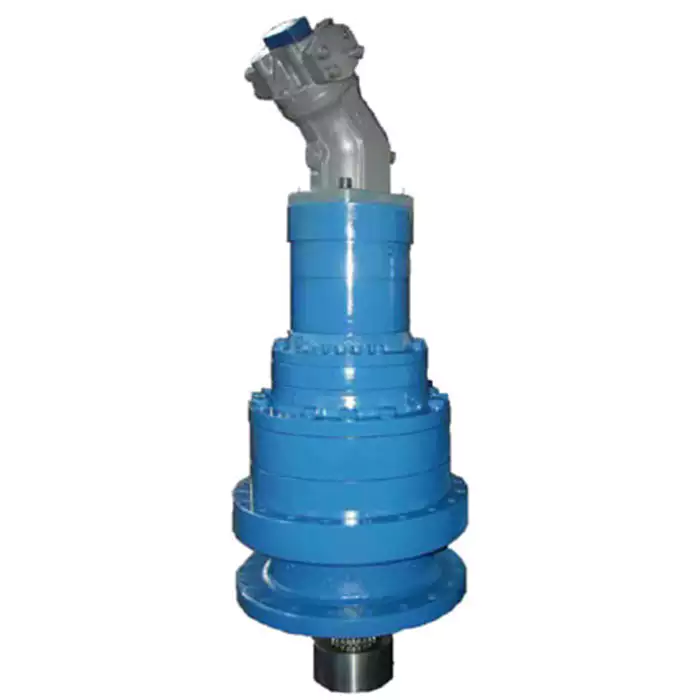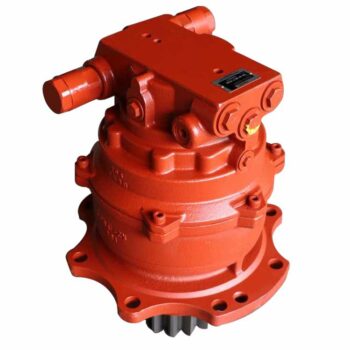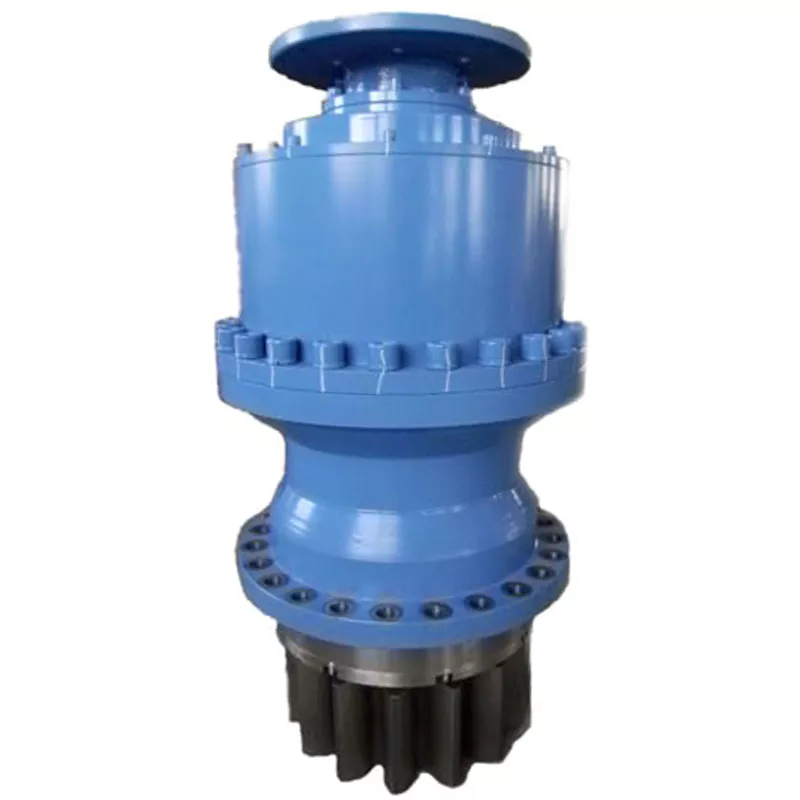Product Description
Product Description
ZHangZhoug New CZPT Hydraulic Co., Ltd. is a professional manufacturer of planetary reducers/gearbox. At present,we developed tens of thousands specifications of the planetary reducer/gearbox, travel drive,swing drive and winch drive.The ratio range is 3.3~9000, and the output torque range is 500~1200000N.m. The installation, dimensions and performance parameters of the reducer are exactly the same as famous European brands, which can be perfectly replaced and interchanged.
Details as follows:
BONFIGLIOLI (300 series, 700C series, 700T series, 600W series)
BREVINI (EM, ED, ET, EQ, EC, PD, PDA, CTD, CTU, SL types)
DINAMIC OIL (types RE, GB, RA, GBA)
REGGIANA RIDUTTORI (RR, RA type)
COMER (PG, PGA, PGR, PGW types)
REXROTH (GFT, GFT-W, GFB type)
ROSSI (R2E, R3E, R4E, RCE, RC2E, RC3E, MR2E, MR3E, MR4E, MRCE, MRC2E, MRC3E)
ZOLLERN (ZHP3.13, ZHP3.15, ZHP3.19, ZHP3.20, ZHP3.22, ZHP3.24, ZHP3.25, ZHP3.26, ZHP3.27, ZHP3.29, ZHP3.31, ZHP3.32)
FAIRFIELD, AUBURN GEAR, OMNI GEAR, O&K, etc. Therefore,our planetary reducer/gearbox can be used to replace the gearboxes of these brands.
| Bonfiglioli | Dinamic oil | Brevini | RR | ||
| 300 | RE110 | EM1571 | ED1571 | ET2571 | RR65/105 |
| 301 | RE210 | EM1030 | ED1030 | ET2030 | RR110/210 |
| 303 | RE240 | ED2030 | ET3030 | EQ4030 | RR310 |
| 304 | RE310 | ED2040 | ET3040 | EQ4040 | RR510 |
| 305 | RE510 | EM1045 | ED2045 | ET3045 | RR510/710 |
| 306 | RE810 | EM1046 | ED2046 | ET3046 | RR810 |
| EM1065 | ED2065 | ET3065 | |||
| 307 | RE1571 | EM1090 | ED2090 | ET3090 | RR1571 |
| RE1520 | |||||
| 309 | RE1520 | ED2150 | ET3150 | EQ4150 | RR1700 |
| 310 | RE2520 | ED2250 | ET3250 | EQ4250 | RR2700 |
| ED2320 | ET3320 | EQ4320 | |||
| 311 | RE3510 | SL3001,SL3002,SL3003,SL3004 | RR4000 | ||
| 313 | RE3511,RE3512,RE3513,RE3514 | SL4001,SL4002,SL4003,SL4004 | RR5000/RR5200 | ||
| 315 | RE6520 | SL6001,SL6002,SL6003,SL6004 SL8501,SL8502,SL8503 | RR6500 | ||
| 316 | GB11000 | SL12001,SL12002,SL12003,SL12004 | RR8000 | ||
| 317 | GB18000,GB21000, | SL18001,SL18002,SL18003 | RR10000 | ||
| 318 | GB26000 | SL25001,SL25002,SL25003,SL25004 | RR15000 | ||
| 319 | GB53000,GB53000 | SL35001,SL35002,SL35003,SL35004 | RR20000 | ||
| 320 | |||||
| 321 | GB61000 | ||||
300 Series Planetary Geabox Parameter
| Model |
Rated Output Torque (N.m) |
Max.Power (KW) |
Max.Input Speed (rpm) |
Ratio | |
| 301 | 1750 | 30 | 3000 | 3.4-2700 | 7-700 |
| 303 | 2500 | 40 | 3000 | 3.6-2800 | 9-800 |
| 305 | 5000 | 60 | 3000 | 3.6-2800 | 9-800 |
| 306 | 8500 | 75 | 2500 | 3.6-2900 | 9-800 |
| 307 | 12500 | 100 | 2500 | 3.4-2400 | 13-700 |
| 309 | 18500 | 130 |
2500 |
3.4-2400 | 13-700 |
| 310 | 25000 | 150 | 2000 | 4-2500 | 40-900 |
| 311 | 35000 | 180 | 2000 | 4-2100 | 18-800 |
| 313 | 50000 | 200 | 2000 | 4-2200 | 18-800 |
| 315 | 80000 | 250 | 1500 | 4-1800 | 70-900 |
| 316 | 105000 | 270 | 1500 | 4.4-1200 | 50-600 |
| 317 | 150000 | 300 | 1000 | 4-1900 | 70-900 |
| 318 | 200000 | 340 | 1000 | 4.4-1100 | 200-700 |
| 319 | 30000 | 380 | 500 | 4.8-1400 | 300-800 |
Office Environment
Our Equipment
Accessories for 300 Series
Certificate
Contact Us
How to contact us?
Nancy Zhang
Foreign Sales&Marketing Manager
HangZhou Kemer Engineering Machinery Co.,LTD
| Application: | Motor, Machinery, Marine, Agricultural Machinery |
|---|---|
| Layout: | Coaxial |
| Hardness: | Hardened Tooth Surface |
| Installation: | Horizontal Type |
| Step: | Three-Step |
| Type: | Planetary Gear Box |
| Customization: |
Available
| Customized Request |
|---|
Challenges in Achieving High Gear Ratios with Compactness in Planetary Gearboxes
Designing planetary gearboxes with high gear ratios while maintaining a compact form factor poses several challenges due to the intricate arrangement of gears and the need to balance various factors:
Space Constraints: Increasing the gear ratio typically requires adding more planetary stages, resulting in additional gears and components. However, limited available space can make it challenging to fit these additional components without compromising the compactness of the gearbox.
Efficiency: As the number of planetary stages increases to achieve higher gear ratios, there can be a trade-off in terms of efficiency. Additional gear meshings and friction losses can lead to decreased overall efficiency, impacting the gearbox’s performance.
Load Distribution: The distribution of loads across multiple stages becomes critical when designing high gear ratio planetary gearboxes. Proper load distribution ensures that each stage shares the load proportionally, preventing premature wear and ensuring reliable operation.
Bearing Arrangement: Accommodating multiple stages of planetary gears requires an effective bearing arrangement to support the rotating components. Improper bearing selection or arrangement can lead to increased friction, reduced efficiency, and potential failures.
Manufacturing Tolerances: Achieving high gear ratios demands tight manufacturing tolerances to ensure accurate gear tooth profiles and precise gear meshing. Any deviations can result in noise, vibration, and reduced performance.
Lubrication: Adequate lubrication becomes crucial in maintaining smooth operation and reducing friction as gear ratios increase. However, proper lubrication distribution across multiple stages can be challenging, impacting efficiency and longevity.
Noise and Vibration: The complexity of high gear ratio planetary gearboxes can lead to increased noise and vibration levels due to the higher number of gear meshing interactions. Managing noise and vibration becomes essential for ensuring acceptable performance and user comfort.
To address these challenges, engineers employ advanced design techniques, high-precision manufacturing processes, specialized materials, innovative bearing arrangements, and optimized lubrication strategies. Achieving the right balance between high gear ratios and compactness involves careful consideration of these factors to ensure the gearbox’s reliability, efficiency, and performance.
Recent Advancements in Planetary Gearbox Technology
Advancements in planetary gearbox technology have led to improved performance, efficiency, and durability. Here are some notable developments:
High-Efficiency Gearing: Manufacturers are using advanced materials and precision manufacturing techniques to create gears with optimized tooth profiles. This reduces friction and enhances overall efficiency, resulting in higher power transmission with lower energy losses.
Enhanced Lubrication: Innovative lubrication systems and high-performance lubricants are being employed to ensure consistent and reliable lubrication even in extreme conditions. This helps to reduce wear and extend the lifespan of the gearbox.
Compact Designs: Engineers are focusing on designing more compact and lightweight planetary gearboxes without compromising their performance. This is particularly important for applications with limited space and weight constraints.
Integrated Sensors: Planetary gearboxes are now being equipped with sensors and monitoring systems that provide real-time data on temperature, vibration, and other operating parameters. This allows for predictive maintenance and early detection of potential issues.
Smart Gearboxes: Some modern planetary gearboxes are equipped with smart features such as remote monitoring, adaptive control, and data analysis. These features contribute to more efficient operation and better integration with automation systems.
Advanced Materials: The use of high-strength and wear-resistant materials, such as advanced alloys and composites, improves the durability and load-carrying capacity of planetary gearboxes. This is particularly beneficial for heavy-duty and high-torque applications.
Customization and Simulation: Advanced simulation and modeling tools enable engineers to design and optimize planetary gearboxes for specific applications. This customization helps achieve the desired performance and reliability levels.
Noise and Vibration Reduction: Innovations in gear design and manufacturing techniques have led to quieter and smoother-running planetary gearboxes, making them suitable for applications where noise and vibration are concerns.
Environmental Considerations: With growing environmental awareness, manufacturers are developing more eco-friendly lubricants and materials for planetary gearboxes, reducing their ecological footprint.
Overall, recent advancements in planetary gearbox technology are aimed at enhancing efficiency, durability, and versatility to meet the evolving demands of various industries and applications.
Challenges and Solutions for Managing Power Transmission Efficiency in Planetary Gearboxes
Managing power transmission efficiency in planetary gearboxes is crucial to ensure optimal performance and minimize energy losses. Several challenges and solutions are involved in maintaining high efficiency:
1. Gear Meshing Efficiency: The interaction between gears can lead to energy losses due to friction and meshing misalignment. To address this, manufacturers use precision manufacturing techniques to ensure accurate gear meshing and reduce friction. High-quality materials and surface treatments are also employed to minimize wear and friction.
2. Lubrication: Proper lubrication is essential to reduce friction and wear between gear surfaces. Using high-quality lubricants with the appropriate viscosity and additives can enhance power transmission efficiency. Regular maintenance and monitoring of lubrication levels are vital to prevent efficiency losses.
3. Bearing Efficiency: Bearings support the rotating elements of the gearbox and can contribute to energy losses if not properly designed or maintained. Choosing high-quality bearings and ensuring proper alignment and lubrication can mitigate efficiency losses in this area.
4. Bearing Preload: Incorrect bearing preload can lead to increased friction and efficiency losses. Precision assembly and proper adjustment of bearing preload are necessary to optimize power transmission efficiency.
5. Mechanical Losses: Various mechanical losses, such as windage and churning losses, can occur in planetary gearboxes. Designing gearboxes with streamlined shapes and efficient ventilation systems can reduce these losses and enhance overall efficiency.
6. Material Selection: Choosing appropriate materials with high strength and minimal wear characteristics is essential for reducing power losses due to material deformation and wear. Advanced materials and surface coatings can be employed to enhance efficiency.
7. Noise and Vibration: Excessive noise and vibration can indicate energy losses in the form of mechanical inefficiencies. Proper design and precise manufacturing techniques can help minimize noise and vibration, indicating better power transmission efficiency.
8. Efficiency Monitoring: Regular efficiency monitoring through testing and analysis allows engineers to identify potential issues and optimize gearbox performance. This proactive approach ensures that any efficiency losses are promptly addressed.
By addressing these challenges through careful design, material selection, manufacturing techniques, lubrication, and maintenance, engineers can manage power transmission efficiency in planetary gearboxes and achieve high-performance power transmission systems.
editor by CX 2023-12-12




